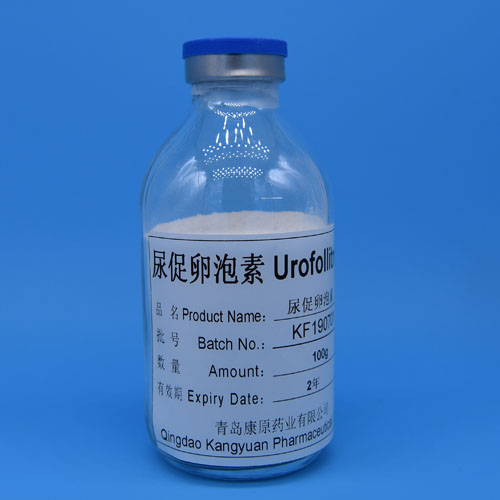Ulinastatin, also known as urinary trypsin inhibitor (UTI),
is a glycoprotein that has gained significant attention in the medical field due
to its therapeutic potential. Ulinastatin is primarily used in the treatment of
acute pancreatitis, sepsis, and various inflammatory conditions. In this
article, we will provide an overview of the manufacturing processes involved in
ulinastatin production and highlight the crucial quality control measures
implemented throughout the production cycle.
Sourcing and Selection of Raw Materials: The first step in ulinastatin
manufacture is the sourcing and selection of high-quality raw materials. The
primary raw material required is porcine pancreatic tissue, which is rich in
trypsin inhibitor. Stringent guidelines are followed to ensure that the porcine
sources are healthy and free from any diseases or contaminants.

Extraction and Purification: The extraction process involves homogenization
of the porcine pancreatic tissue and subsequent solubilization to obtain the
crude extract. Various techniques, such as acid extraction or enzymatic
hydrolysis, are employed to extract ulinastatin. The crude extract undergoes
multiple purification steps, including filtration, centrifugation, and
chromatography, to remove impurities and obtain a highly purified ulinastatin
solution.
Formulation and Sterilization: After purification, the ulinastatin solution
is subjected to formulation processes, where appropriate excipients and
stabilizers are added to enhance stability and shelf life. The formulation is
prepared under strict aseptic conditions to prevent contamination. Terminal
sterilization, such as sterile filtration or heat treatment, is applied to
ensure the product's sterility.
Quality Control: Quality control plays a vital role in ulinastatin
manufacture to ensure the safety, efficacy, and consistency of the final
product. Quality control tests are conducted at various stages, including raw
materials, in-process samples, and the final formulated product. These tests
involve assessing the purity, potency, identity, and microbiological attributes
of ulinastatin. High-performance liquid chromatography (HPLC), enzyme-linked
immunosorbent assay (ELISA), and microbiological testing are commonly employed
methods.
Packaging and Labeling: Once the ulinastatin formulation passes all quality
control tests, it is ready for packaging. The product is filled into sterile
vials or ampoules, which are then sealed to maintain the integrity and sterility
of the drug. Accurate labeling is essential to provide clear instructions for
use, dosage, storage conditions, and batch information.
The manufacture of ulinastatin involves a series of
well-defined processes, starting from sourcing high-quality raw materials to the
formulation, sterilization, and packaging of the final product. Strict adherence
to quality control measures throughout the production cycle ensures the safety,
efficacy, and reliability of ulinastatin. Continued advancements in
manufacturing techniques and quality control systems contribute to the
availability of high-quality ulinastatin for therapeutic use, benefiting
patients suffering from acute pancreatitis, sepsis, and inflammatory
disorders.